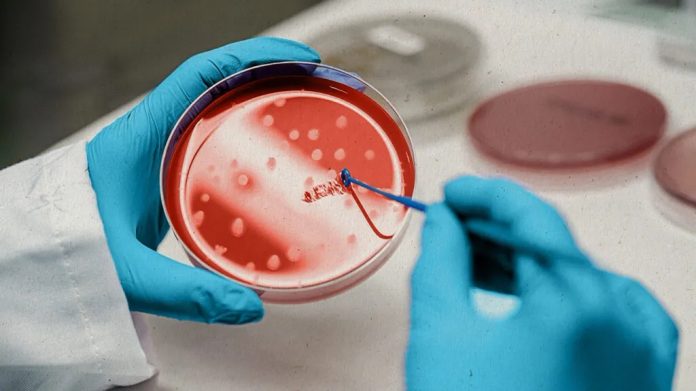Scientists continue to make advances is stem cell research. A problem with the use of stem cells is the possibility of malignant cells developing. Their latest discovery may reduce this risk; thus, making stem cell therapies safer for patients for patients.
A research team led by Carla Koehler, professor of chemistry and biochemistry and Dr. Michael Teitell, professor of pathology and pediatrics, both members of the Eli and Edythe Broad Center for Regenerative Medicine and Stem Cell Research and the Jonsson Comprehensive Cancer Center, have discovered a new agent that may be useful in strategies to remove pluripotent stem cells that fail-to-differentiate from their progeny, tissue-specific cells, potentially resulting in safer therapies for patients. Pluripotent cells are stem cells that have the potential for becoming any cell in the body.
The researchers note that when stem cells are differentiated into specific daughter cells such as nerve, muscle, or bone cells, not all of the stem cells differentiate, leaving some pluripotent stem cells mixed in with the differentiated cells. Because of the pluripotent stem cell’s ability to become any cell type in the body, these cells can also become unintended cells such as bone in blood, or form tumors called teratomas. Therefore, identifying and removing pluripotent stem cells from the differentiated cells before using daughter cells is of utmost importance in stem cell-based therapeutics. Current methods for removing pluripotent stem cells are limited.
Studies in the model system Saccharomyces cerevisiae (simple baker’s yeast) by the research team have identified a molecule called MitoBloCK-6 that inhibits assembly of the mitochondria, which are the power plants of cells. As the group moved to more complex systems, they discovered that MitoBloCK-6 blocked cardiac (heart) development in zebrafish. However, MitoBloCK-6 had no effect on differentiated cell lines that are typically cultured in the lab. “I was puzzled by this result, because we thought this pathway was essential for all cells regardless of differentiation state,” said Dr. Koehler.
Post-doctoral fellow Deepa Dabir meticulously tested the compound on many differentiated cell lines; however, the results were still the same: the cells remained healthy. Going forward, the researchers decided to test MitoBloCK-6 on human pluripotent stem cells. Post-doctoral fellow Kiyoko Setoguchi showed that the pluripotent stem cells died in the presence of MitoBloCK-6, but shortly after differentiation, the daughter cells were resistant to death. MitoBloCK-6 caused the pluripotent stem cells to die by triggering apoptosis, a process of cell suicide. The death of pluripotent stem cells left a population of differentiated cells, thus potentially reducing the risks of teratoma and other problems that would limit their use as a regenerative medicine treatment strategy. Dr. Teitell explained, “We discovered that pluripotent stem cell mitochondria undergo a change during differentiation into tissue-specific daughter cells, which could be the key to the survival of the differentiated cells when the samples are exposed to MitoBloCK-6. We are still investigating this process in mitochondria, but we now know that mitochondria have an important role in controlling pluripotent stem cell survival.”
MitoBloCK-6 is a “small molecule,” which makes it able to easily cross membranes or the ‘skin’ of cells where it can reach the mitochondria. This quality makes MitoBloCK-6 or a derivative compound with similar properties ideal for use as a drug because as a small molecule it can function in many cell types and species and can alter the function of mitochondria in the body for therapeutic effects. Dr. Koehler noted, “It is exciting that our research in the one-cell model Baker’s yeast yielded an agent for investigating and controlling mitochondrial function in human pluripotent stem cells. This illustrates that mitochondrial function is highly conserved across organisms and confirms that focused studies in model systems provides insight into human stem cell biology. When we started these experiments, we did not predict that we would be investigating and controlling mitochondrial function in pluripotent stem cells.”








